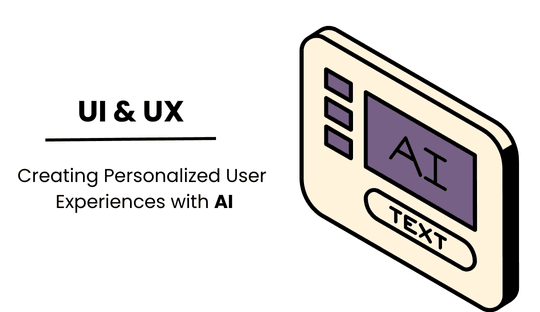
Creating Personalized User Experiences with AI
In today’s rapidly evolving digital landscape, personalization has become a key driver of user engagement and satisfaction. For creative brand companies like Flykez CO in Estonia, leveraging AI to create personalized user experiences is a game-changer. By integrating advanced UI/UX tools, design systems, and UX metrics, businesses can tailor their services to meet individual user needs, thereby enhancing overall user satisfaction and loyalty.
The Role of AI in Personalization
Artificial Intelligence (AI) has transformed the way we approach user experience (UX) and user interface (UI) design. By analyzing vast amounts of user data, AI can uncover patterns and preferences that allow for highly personalized experiences. This capability is particularly beneficial for companies like Flykez CO, which offers a range of services including website design and development, search engine optimization (SEO), brand design and identity, digital marketing, and UI & UX design.
Enhancing UI with AI-Driven Personalization
- UI/UX Tools and AI Integration
UI/UX tools enhanced with AI capabilities can significantly streamline the design process. These tools can predict user behavior, suggest design improvements, and even automate repetitive tasks, allowing designers to focus on more creative aspects of the project. Tools like Adobe XD and Sketch, when integrated with AI, provide predictive analytics and real-time feedback, making it easier to create user-centric designs.
- Design Systems for Consistency
Implementing design systems is crucial for maintaining consistency across different platforms and products. AI can help in creating and managing these systems by ensuring that design elements are used consistently and efficiently. This not only improves the visual coherence of a brand but also enhances user experience by providing a seamless interface across various touchpoints.
Leveraging UX Metrics for Improvement
UX metrics play a vital role in measuring the effectiveness of design strategies. AI can analyze these metrics to provide deeper insights into user behavior and preferences. By monitoring key performance indicators such as user engagement, conversion rates, and user feedback, companies can make data-driven decisions to refine their UI/UX strategies.
For Flykez CO, utilizing AI to analyze UX metrics can reveal valuable information about how users interact with their websites and digital platforms. This information can then be used to make informed decisions that enhance user satisfaction and drive business growth. Also Read About The Role of Typography in Modern UX Design
Creating Engaging Experiences with UI Animation
UI animation is an effective way to engage users and enhance their experience. AI can be used to create dynamic animations that respond to user interactions in real-time. This not only makes the interface more engaging but also provides intuitive feedback that guides users through their journey.
For instance, micro-interactions such as button animations, loading indicators, and transition effects can make a significant difference in how users perceive and interact with a website. By incorporating AI-driven animations, Flykez CO can create a more immersive and interactive user experience.
Crafting Impactful UX Writing
UX writing is another critical component of user experience that can benefit from AI. By analyzing user data, AI can help create personalized content that resonates with the target audience. This includes crafting microcopy, error messages, and onboarding instructions that are tailored to individual user preferences and behaviors.
Effective UX writing can guide users through their journey, making interactions more intuitive and enjoyable. For Flykez CO, using AI to enhance UX writing can result in a more user-friendly interface that fosters engagement and loyalty.
Staying Ahead with UI Trends 2024
Staying updated with the latest UI trends is essential for delivering cutting-edge user experiences. In 2024, trends such as voice user interfaces (VUI), augmented reality (AR), and virtual reality (VR) are set to revolutionize the way users interact with digital products. AI plays a crucial role in these trends by enabling more natural and intuitive interactions.
For example, AI-powered voice assistants can provide personalized responses based on user preferences, while AR and VR can create immersive experiences that are tailored to individual users. By embracing these trends, Flykez CO can offer innovative solutions that meet the evolving needs of their clients.
Conclusion
Creating personalized user experiences with AI is no longer a luxury but a necessity for companies aiming to stay competitive in the digital age. For Flykez CO, integrating AI with advanced UI/UX tools, design systems, and UX metrics can lead to more engaging, intuitive, and satisfying user experiences. By leveraging AI-driven personalization, Flykez CO can enhance its service offerings and establish itself as a leader in the creative brand industry in Estonia.
Embracing AI and staying ahead of UI trends will ensure that Flykez CO continues to deliver exceptional user experiences that drive engagement and business growth. As the digital landscape continues to evolve, the ability to create personalized experiences will be a key differentiator for forward-thinking companies.
For more information on how FlyKez CO can help your business leverage data visualization in UI/UX design, visit our website at www.flykez.com.
